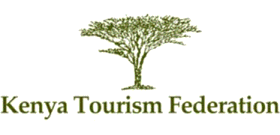 Kenya’s Park Fee Shake-Up: New Payment System Sparks Industry Backlash Over Hidden Costs
Kenya’s Park Fee Shake-Up: New Payment System Sparks Industry Backlash Over Hidden Costs
The Kenya Tourism Federation (KTF) has sounded the alarm over recent changes to the Kenya Wildlife Service (KWS) park-entry payment system, warning that the new model could have far-reaching consequences for the country’s tourism sector. The upgraded payment portal, introduced despite a standing court order, has drawn sharp criticism for its restrictive payment options and the introduction of a concealed 5 percent “gateway fee” that only becomes visible at the final stage of payment.
Fred Odek, Chairperson of KTF, voiced the federation’s concerns in a statement, describing the new system as both “discriminatory and unlawful.” He emphasized that the changes were implemented without public participation, a move that he argues undermines the rule of law and threatens to erode Kenya’s standing as a premier safari destination. Odek’s remarks reflect a growing unease among industry stakeholders, who fear that the additional costs and operational hurdles could drive tourists and business away from Kenya’s iconic parks .
At the heart of the controversy is the 5 percent gateway fee, which is tacked onto park-entry fees without prior disclosure. This charge, according to KTF, lacks any legal foundation and is particularly burdensome for tour operators who routinely process large payments to KWS. The federation argues that the fee structure is inequitable, as it penalizes high-volume operators with higher absolute charges for the same service—contradicting industry norms where bulk transactions typically attract discounts, not surcharges .
Compounding the issue is the limited range of payment options available on the new platform. Currently, only M-Pesa and Visa card transactions are supported, a restriction that KTF warns could create significant bottlenecks during peak tourist seasons. Many operators face card limits that are quickly reached, especially when handling group bookings or multiple daily transactions. This lack of flexibility, combined with the hidden fees, is seen as a step backward in terms of transparency and customer service.
The financial implications of the new system are substantial. KTF estimates that the tourism sector could incur more than Sh370 million in additional, unbudgeted costs annually as a direct result of the gateway fees. This projection is based on anticipated 2024 park-revenue figures of Sh7.41 billion. Such an increase in operating expenses threatens to squeeze already tight margins for tour operators and could ultimately be passed on to visitors, making Kenyan safaris less competitive on the global stage .
Odek has also raised concerns about the potential reputational damage to Kenya’s tourism industry. He cautioned that the new charges risk making Kenyan safaris prohibitively expensive, warning that the country is developing a reputation as an unreliable destination. With Africa offering a wealth of alternative safari experiences, the risk of losing market share to neighboring countries is very real .
The dispute over the payment system is further complicated by legal considerations. KTF has accused KWS of defying a court order issued on October 1, 2025, which explicitly barred the implementation of new park-fee rates. The federation insists that KWS should have reverted to the previous eCitizen payment system until the court’s determination is finalized. This legal standoff adds another layer of uncertainty for operators and travelers alike, who are left navigating a rapidly changing regulatory landscape .
The timing of these changes coincides with a broader government review of park-entry fees under the Wildlife Conservation and Management (Access and Conservation) (Fees) Regulations, 2025, which were approved by Parliament in September. According to the Ministry of Tourism and Wildlife’s Regulatory Impact Statement, the reforms are designed to boost KWS park-fee revenues from Sh7.41 billion in 2024 to Sh16.58 billion by 2028, with the goal of enhancing conservation financing. However, the sharp increases in entry fees—such as the jump in Nairobi National Park fees for residents from Sh430 to Sh1,000, and for non-residents from \$43 (Sh5,570) to \$80 (Sh10,360)—have sparked debate about the balance between sustainability and affordability .
Premium parks like Amboseli and Lake Nakuru are set to charge Sh1,500 for locals and Sh11,660 for foreigners, while mid-tier parks such as Meru and Aberdare will cost Sh800 for locals and \$70 (Sh9,070) for foreigners. Even parks like Hell’s Gate will see fees rise to Sh500. While the Ministry has defended these increases as necessary for the long-term sustainability of Kenya’s wildlife heritage, industry voices argue that the combination of higher fees, hidden transaction costs, and limited payment options undermines trust and transparency—key ingredients for a thriving tourism sector .
In response to the mounting criticism, KTF is calling for the immediate suspension of the 5 percent gateway fee, the restoration of the previous eCitizen platform, and full compliance with the court order. The federation’s stance reflects a broader sentiment within the industry: that reforms must be implemented transparently, lawfully, and with the input of those most affected. As Kenya navigates this period of transition, the outcome will have significant implications not only for local operators but also for the continent’s position in the global safari market.
For Africa’s travel sector, the developments in Kenya serve as a timely reminder of the importance of balancing revenue generation with operational fairness and customer trust. As governments across the region look to modernize their tourism infrastructure and payment systems, the Kenyan experience underscores the need for inclusive dialogue, legal compliance, and a focus on long-term competitiveness. The choices made today will shape the future of African tourism for years to come, influencing everything from pricing strategies to international perceptions of the continent’s most treasured destinations.
